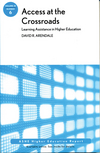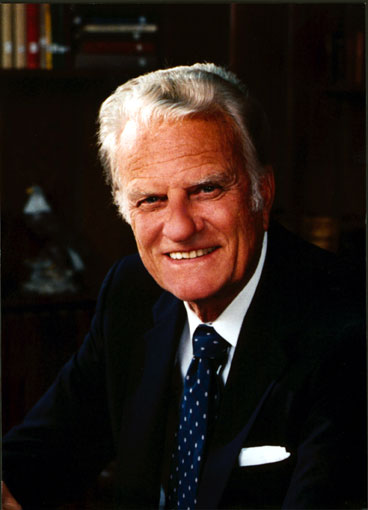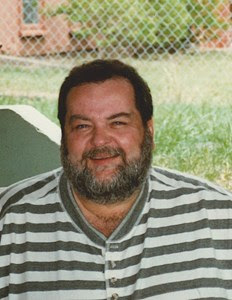
This blog focuses on my scholarship in my five research projects: learning assistance and equity programs, student peer study group programs, learning technologies, Universal Design for Learning, and history simulations. And occasional observations about life.
History Simulations: Engaging Critical Thinking and Developing Multiple Perspectives from Other Cultures

My Global History Course Curriculum: Building Cultural Competency and Skill for a Diverse and Interconnected World
2018 Revised Annotated Bibliography of Postsecondary Peer Cooperative Learning Programs
 I am happy to announce that the 2018 Revised Annoated Bibliography of Postsecondary Peer Cooperative Learning Programs is now available to download. Click on this link for a PDF or Word version of it.
I am happy to announce that the 2018 Revised Annoated Bibliography of Postsecondary Peer Cooperative Learning Programs is now available to download. Click on this link for a PDF or Word version of it.
There are now nearly 1,500 entries spanning 488 pages. I noticed recent listserv conversations about locating research studies to support Supplemental Instruction programs or similar approaches operating at the college level. The directory grew significantly in the past two years. The directory includes the Emerging Scholars Program (Dr. Uri Treisman model), Peer-Led Team Learning, Supplemental Instruction, and Video-based Supplemental Instruction, Structured Learning Assistance, Accelerated Learning Groups, and Peer Assisted Learning.
You can download the directory as a PDF or Word document. I also included some sub-topics of the directory such as facilitator development, vocational influence, identity development and more. I also provide the EndNote library file to allow you to more easily search the database for the topic you want. Be sure also to download the keyword search guide to discover all the ways to search the contents for the information you want. Other bibliographic database systems may be able to open the EndNote file but I am not an expert with that process.
No doubt I missed some citations related to these seven major peer learning programs. Please send me the citation and perhaps a copy of the publication and I will be happy to include in an update. Thanks for consideration.
Approaches to Learning Assistance: Concurrent Acquition of Knowledge and Skills
 With this blog posting, I pick back up on my series of samples from my book, Assistance at the Crossroads described in the left-hand column of this website. There are many ways that academic help can be provided for college students who are struggling in some of their classes.
With this blog posting, I pick back up on my series of samples from my book, Assistance at the Crossroads described in the left-hand column of this website. There are many ways that academic help can be provided for college students who are struggling in some of their classes.
This learning assistance approach operates through concurrent learning experiences. Students simultaneously enroll in a college-level class, whether or not they have been identified as academically underprepared, and use learning assistance services to support their learning in that class. A common characteristic of such a class is academic rigor exceeding the average of other college-level classes. These courses are challenging for many students, and the classes have high withdrawal and failure rates. Sometimes they are called “gatekeeper” classes (Jenkins, Jaggars, and Roksa, 2009).
For purposes of this discussion, this historically difficult class is called a “target class,” as learning assistance services are customized and “targeted” for serving students enrolled in that specific course. Other students in the same class that have not been identified as academically underprepared for content material in that particular class are welcome to use the learning assistance activities as supplemental or enrichment experiences to deepen mastery of course content. This concurrent acquisition approach is divided into three smaller groups of activities: those offered as supplemental learning experiences through the student’s voluntary participation; those offered as a coordinated program that requires moderate involvement by the target course instructor; and those embedded, infused, or mainstreamed in the course targeted for academic support that thereby serve all students enrolled in the class, regardless of their academic preparation.
One of the activities described in the previous section on prerequisite acquisition approaches could also have appeared in this section. Because most students enroll in only a single developmental course, the rest of their courses are at the college level. These students concurrently develop competency through the developmental course while they advance their knowledge and skills through the college-level courses. The key issue that places developmental courses in the previous section is that students are not ready to enroll in the college-level course for which they are underprepared. They are, however, ready for enrollment in other college-level courses. (To be continued.....)
Dr. Rev. Billy Graham - "He is Risen"
 In this podcast episode, we feature Reverend Billy Graham sharing a five-minute, low-key talk about importance of the Easter Story that he recorded in 1960 while on location in Jerusalem. There is a video of the same speech available through YouTube (click this link to watch it). Dr. Graham has retired from active preaching and lives in an assisted medical care facility. His wife passed a few years ago. I attended one of his revival meetings in a crowded Royals baseball stadium in Kansas City many years ago. It was an experience that I still remember today. Here is just a little bit of information about him. He was an active preacher and author for six decades. Dr. Graham sought to relate the Bible to contemporary social issues. He preached jointly with Dr. Martin Luther King at some crusades in the 1950s. Graham provided some of the bail money to release Dr. King when he was arrested after a civil rights demonstration. It is estimated the total audience at revival meetings, listeners on radio, and viewers on television of Dr. Graham’s messages exceeds two billion people. Click this link for a PDF from Wikipedia on the life of Dr. Graham.
In this podcast episode, we feature Reverend Billy Graham sharing a five-minute, low-key talk about importance of the Easter Story that he recorded in 1960 while on location in Jerusalem. There is a video of the same speech available through YouTube (click this link to watch it). Dr. Graham has retired from active preaching and lives in an assisted medical care facility. His wife passed a few years ago. I attended one of his revival meetings in a crowded Royals baseball stadium in Kansas City many years ago. It was an experience that I still remember today. Here is just a little bit of information about him. He was an active preacher and author for six decades. Dr. Graham sought to relate the Bible to contemporary social issues. He preached jointly with Dr. Martin Luther King at some crusades in the 1950s. Graham provided some of the bail money to release Dr. King when he was arrested after a civil rights demonstration. It is estimated the total audience at revival meetings, listeners on radio, and viewers on television of Dr. Graham’s messages exceeds two billion people. Click this link for a PDF from Wikipedia on the life of Dr. Graham.
Remembering Jim, my Big Brother
 Remembrance of Jim, my Big Brother
Remembrance of Jim, my Big Brother
After a long struggle with complications of diabetes, my brother passed in April 2017. He was 70 years of age. I miss him dearly but I celebrate a life well lived, rich with the places he visited and the people he called family and friends. A person’s life is sometimes defined by the memories held by others and the items that are left behind. They are the evidence of a person’s passions and values.
To know Jim is to know his love of jazz music. He enjoyed classic and new-age jazz. A favorite artist was Miles Davis playing during the visitation today. When I see a bottle of Tabasco sauce on the table, I sometimes remember his fond memories of visiting New Orleans, listening to jazz legends on Bourbon Street, and his side trip along the Gulf Coast to Avert Island which is the home and manufacturing location of Tabasco Sauce.
To know Jim is to know his love of wildlife and cats. Jim enjoyed his cats. His last pair were a brother and sister he rescued after someone abandonened them in the industrial district where Jim worked. They were named Molly and Wiley. Other cats spoiled by Jim were Gladys and Ben. Jim had a pillow on his bed with the following message that exhorted him On the table is a pillow that reminded him to “be the kind of person that his cats wanted him to be”. The birds were enjoyed by Jim and also by the cats as they peered out the front screen door. Jim had up to ten bird feeders surrounding his home. Those birds we miss Jim greatly next winter. In honor of his love of cats, we recommend any gifts in his memory be sent to the animal rescue center indicated in the program card as you entered the room. He often visited the Leoss Bluffs National Wildlife Refuge, formerly named the Squaw Creek National Wildlife Refuge north of Kansas City.
To know Jim is to know his love of camping, fishing, and nature. One of his favorite memories was camping for the entire summer in Colorado. Another is the time he was invited by Mike McGonigle and his father to accompany them on a historic fishing trip in Canada. Jim also liked to collect rocks and geodes since he had a passion for nature and science.
To know Jim is to know his love of coffee. He began each day with reading the New York Times Newspaper, brewing a pot of exotic coffee he has freshly ground, and enjoying each cup. He especially liked the international coffees he bought at Sprouts grocery stores. When I came down to Kansas and visit, my favorite memories were sitting at the dining room table in the morning, drinking some of his fresh brewed coffee, discussing world events, and just enjoying one another’s company. When I drink coffee, I think of Jim.
To know Jim is to know that he was a foodie. One way to define is a foodie is the person enjoys different types of food, prepares food for others, collects food, or collects cookbooks. Jim did all four. At one time, he was a Chef at the Prospect Restaurant near Westport, Kansas City. Much of his career since then has been as a fish whole seller with several firms in the region. His previous career as a chef gave him a unique way of relating to the chefs of white table cloth restaurants and meat marketers in Kansas City when he became a seller of fish rather than preparing fish. Jim was thankful for the way the company treated him and the people he had the chance to work with and for. He was happy that he had the opportunity to work with the top chefs and meat marketers of Kansas City and encourage and inform them to creatively use seafood from around the world with their customers.
My brother was many things. I most remember his friendship and kindness to me.
-- David Arendale
Updated 2017 Guide to iPad Apps for Academic and Personal Use
 I updated by 2017 Guide to iPad Apps for Academic and personal Use. Click on the following link to download the PDF document. <click on this link>. I added a collection of apps for listening to podcasts on iOS devices. Whle the Apple Podcast app is my preference, there are others that provide different ways to sort through the 250,000+ podcasts available through the iOS ecosystem.
I updated by 2017 Guide to iPad Apps for Academic and personal Use. Click on the following link to download the PDF document. <click on this link>. I added a collection of apps for listening to podcasts on iOS devices. Whle the Apple Podcast app is my preference, there are others that provide different ways to sort through the 250,000+ podcasts available through the iOS ecosystem.
